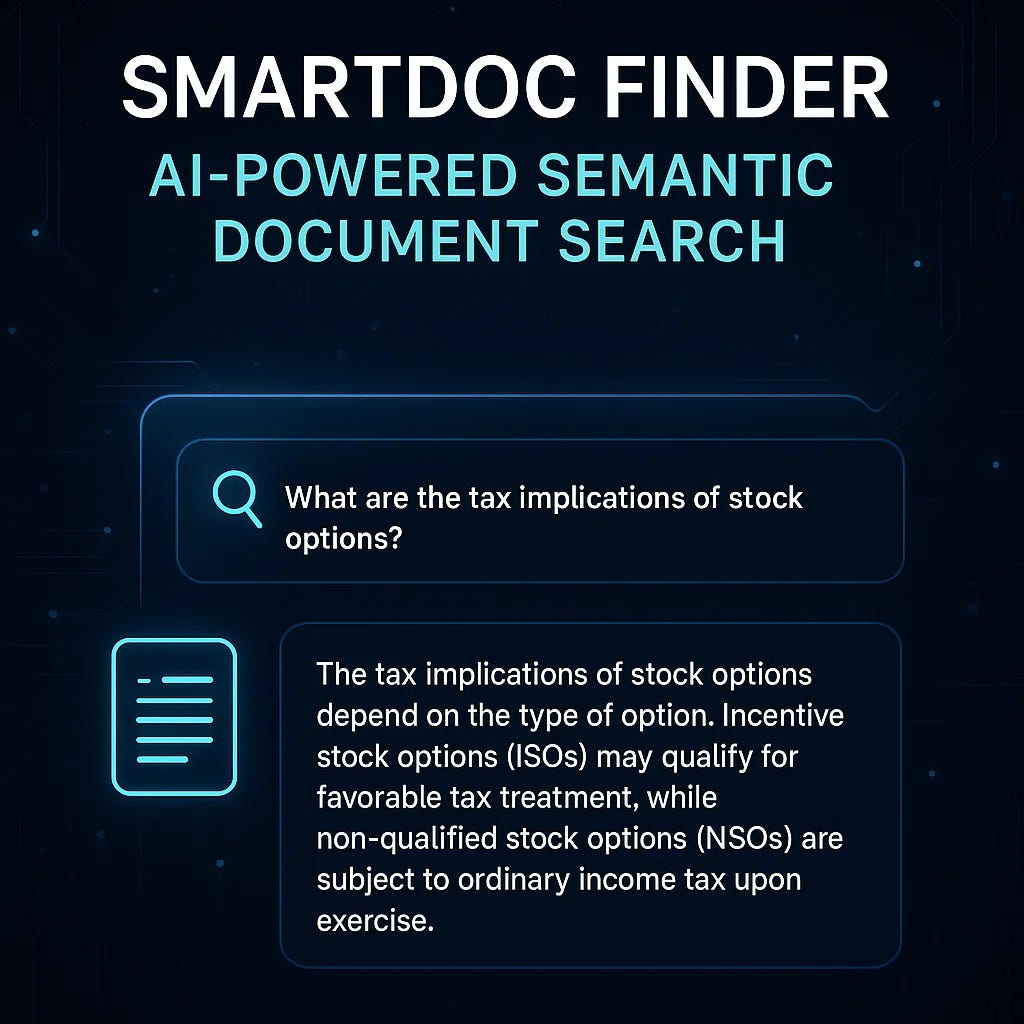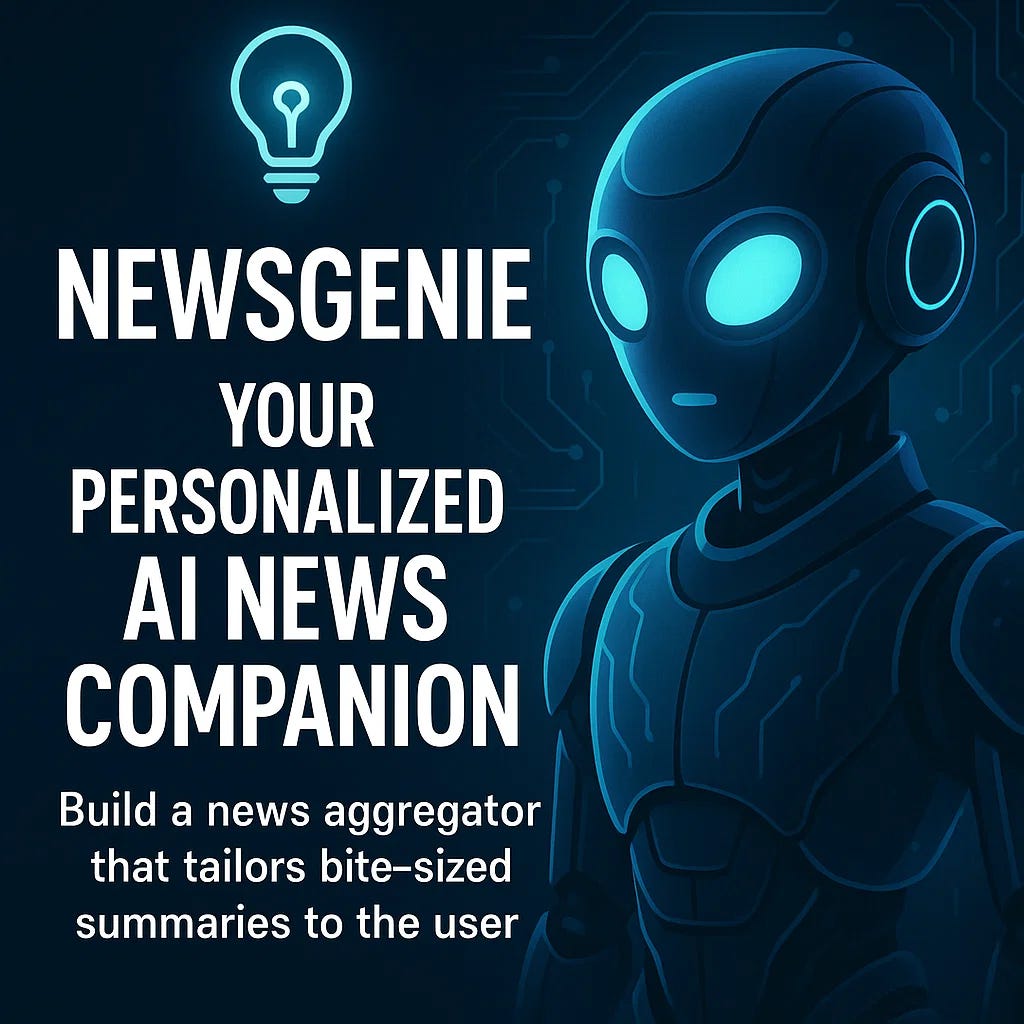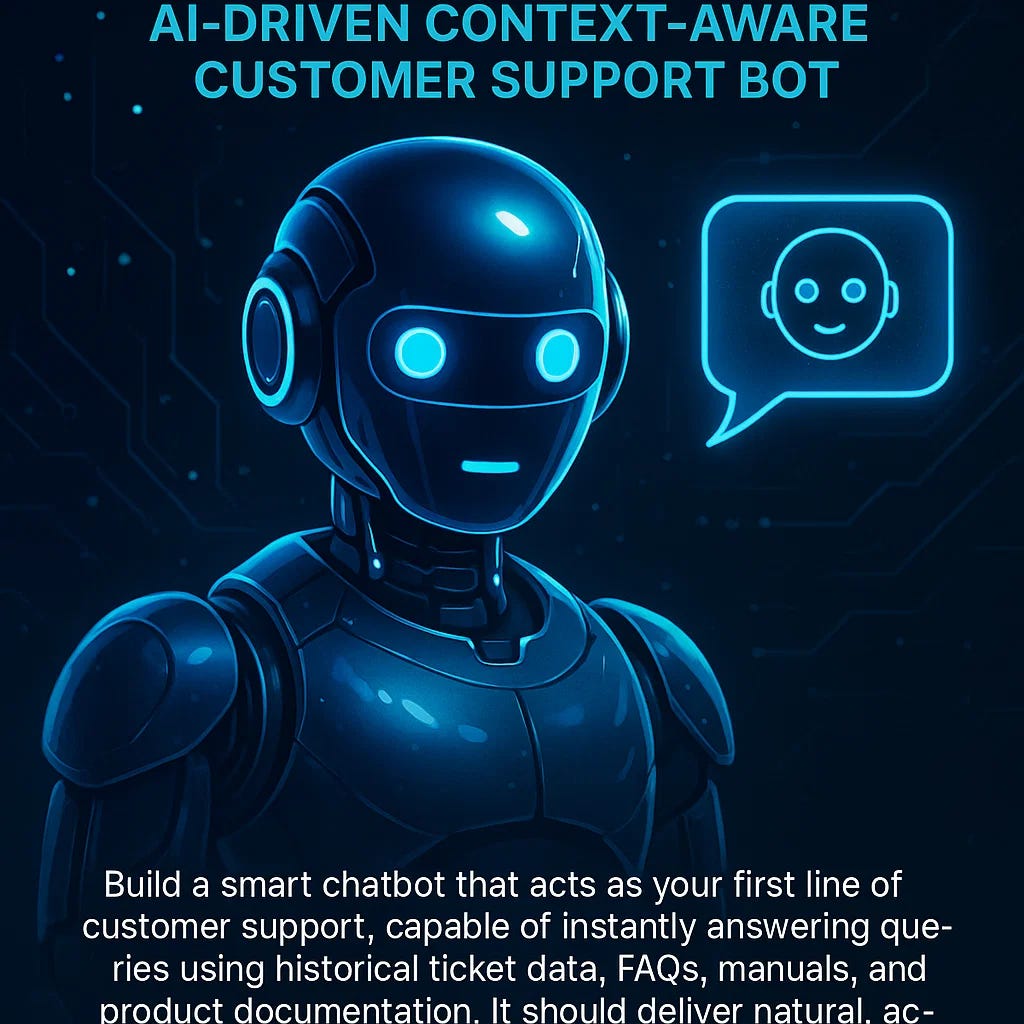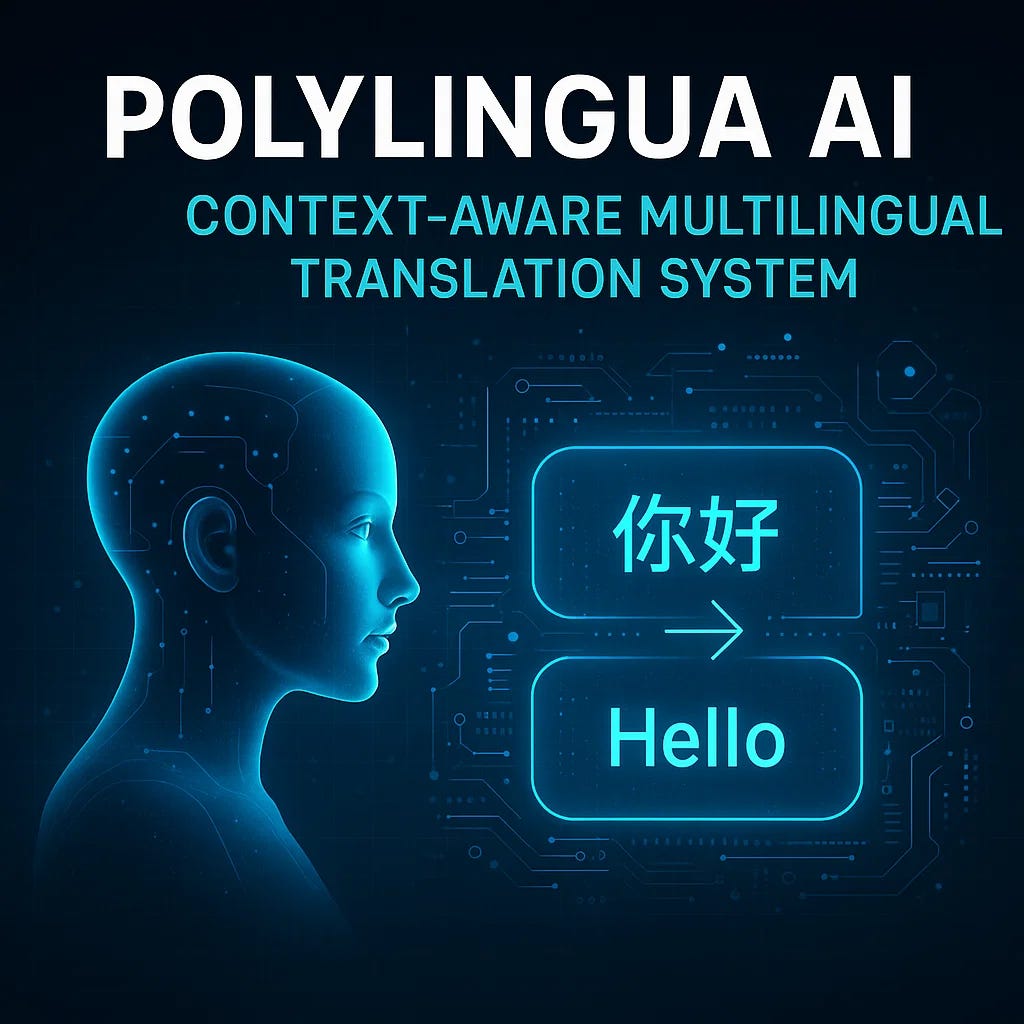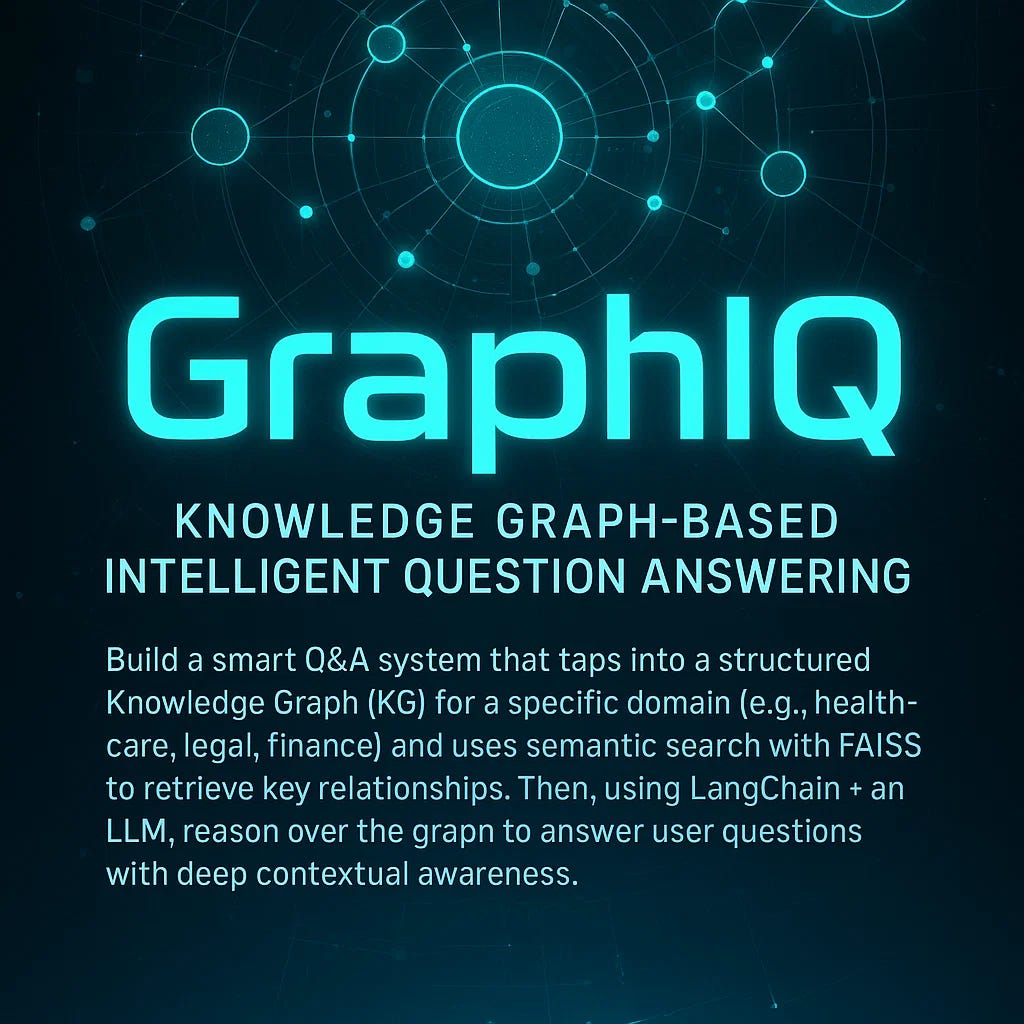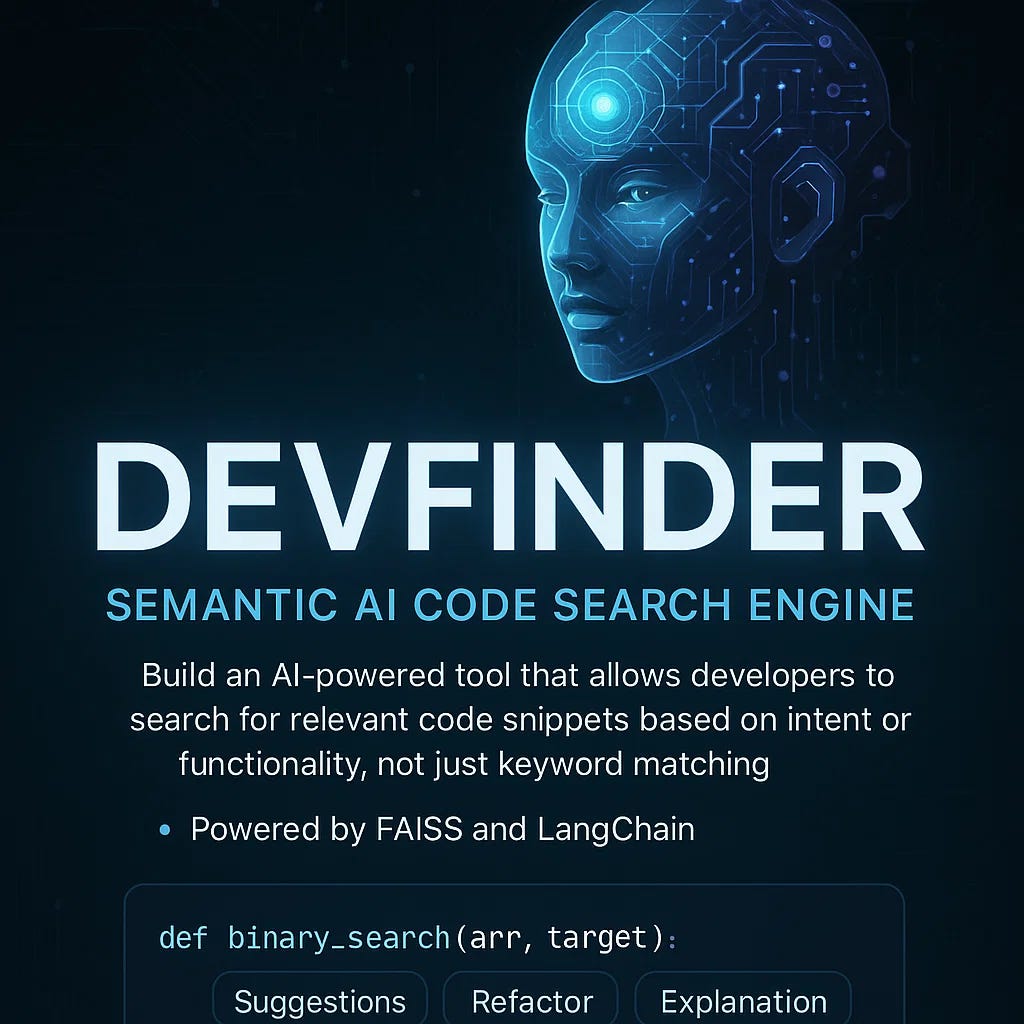Imagine having the power to build AI-driven systems that can search through massive datasets in seconds, understand context like a human, and deliver smart, relevant answers to complex queries. Sounds like magic?
It’s not — it’s FAISS DB and Langchain, two cutting-edge technologies that are changing the landscape of artificial intelligence.
In today’s world, where data is exploding at an unprecedented rate, traditional search methods can no longer keep up with the sheer volume and complexity of information.

Top 8 LLM + RAG Projects for your AI Portfolio 2025
This is where FAISS DB (Facebook AI Similarity Search) comes in, revolutionizing how we search and retrieve data. FAISS is a powerful library designed specifically for fast, similarity-based searches across large datasets. Whether you’re working with text, images, or embeddings, FAISS ensures that AI models can efficiently locate relevant information in the blink of an eye.
Now, enter Langchain — a framework that’s simplifying the process of building Large Language Model (LLM) applications. Langchain allows developers to “chain” together multiple components of an AI system, such as prompt engineering, memory, and tools like FAISS, to create more dynamic, context-aware applications.
In this blog, we’ll dive into 10 insane project ideas you can build using both FAISS DB and Langchain, showcasing real-world applications that will not only enhance your AI skills but also help you stand out in the job market.
These projects will equip you with the practical knowledge you need to land a high-demand AI role by 2025.
🔔 Follow Me: Need Help in Career | Medium | GitHub | Linkedin | Join Community
❤️ Get your RAG [18+ Projects] E-Book Now: https://topmate.io/simranjeet97/1756027
🧠 Project Name: SmartDoc Finder — AI-Powered Semantic Document Search
Create an intelligent document search tool where users can ask questions in plain English, and the system returns not just a list of documents, but actual answers pulled and reasoned from those documents — leveraging both FAISS DB and Langchain for power and flexibility.
SmartDoc Finder
Tools & Technologies
- FAISS — to store and retrieve embeddings of documents
- Langchain — to handle chaining of LLM prompts, memory, and logic
- OpenAI / LLaMA / Claude — as LLM backend (via Langchain)
- Streamlit or React — for a quick and elegant front-end
Step-by-Step Design Process
1. Data Ingestion & Preprocessing
- Upload PDFs, docs, or scraped text.
- Chunk documents (e.g., 500–1000 tokens) for more accurate embedding.
- Generate embeddings for each chunk using Langchain’s wrapper around an embedding model (OpenAI, Hugging Face, etc.).
- Store all vector embeddings with references in FAISS DB.
2. Semantic Search
- User inputs a natural language query (e.g., “What are the benefits of AI in logistics?”)
- Langchain converts the query into an embedding vector.
- FAISS searches for top N most semantically similar document chunks.
3. Intelligent Answering
- Langchain passes retrieved chunks as context to the LLM.
- The LLM then: Summarizes, Extracts answers, Or holds a conversation about the documents
4. UI & Interaction
- Display top results with:
- Highlighted source chunks
- Direct answer
- Option to “ask follow-up” or “read more”.
Real-World Applications
- Internal document search for large corporations
- Smart customer support (pulling from manuals, FAQs)
- Academic paper search engines
- Personal knowledge management systems (Second Brain)
Bonus Upgrade Ideas [For You]
- Add document tagging and filtering (e.g., date, topic).
- Train with company-specific language or jargon.
- Implement a feedback loop to fine-tune search quality.
🧠 Project Name: NewsGenie — Your Personalized AI News Companion
Build a news aggregator that doesn’t just show headlines — it understands what the user cares about and delivers bite-sized summaries, tailored in tone, topic, and even reading time, using FAISS for retrieval and Langchain-powered LLMs for intelligent summarization.
NewsGenie
Tools & Technologies
- Langchain — for chaining embeddings, summarization, and dynamic prompts
- FAISS — for storing semantic embeddings of news chunks
- News APIs (e.g., NewsAPI, SerpAPI, custom scrapers) — to pull fresh content
- Custom Scraping —Firecrawl.
- Hugging Face / OpenAI Models — for summarization
- User Preferences DB — Firebase, MongoDB, or Supabase
- Frontend — React or Streamlit for a responsive UX
Step-by-Step Design Process
1. News Collection
- Crawl or use APIs to pull articles from various sources (CNN, BBC, Hacker News, TechCrunch).
- Extract headlines, body text, timestamps, source, and tags.
2. Preprocessing & Embedding
- Clean text; chunk long articles into digestible paragraphs.
- Generate embeddings for each chunk using an LLM-compatible model via Langchain.
- Index all chunks in FAISS DB with metadata (source, category, date).
3. User Profile Matching
- Store user preferences (topics, tone, length, preferred sources).
- Convert preferences into embedding queries.
- Search FAISS for the most relevant articles per user.
4. AI Summarization
- Use Langchain to:
- Retrieve top article chunks
- Summarize them into concise, personalized digests
- Optionally rewrite them to fit user tone (formal, casual, fun)
5. Output Experience
- Build a clean UI to display:
- Personalized news feed
- Source links
- Summary + key points
- Options to “read more,” “hide source,” or “change preference”
Real-World Applications
- Personalized news readers (alternative to Flipboard or Feedly)
- Tech news aggregators for developers or niche audiences
- Summary newsletters for executives or busy professionals
- Market update digests for financial analysts
Bonus Upgrade Ideas [For You]
- Add sentiment analysis for each article.
- Let users choose daily email digests.
- Integrate with Twitter/X trends or Reddit posts.
- Add voice narration for audio summaries using TTS (text-to-speech).
🤖 Project Name: SupportGenie — AI-Driven Context-Aware Customer Support Bot
Build a smart chatbot that acts as your first line of customer support, capable of instantly answering queries using historical ticket data, FAQs, manuals, and product documentation. It should deliver natural, accurate, and contextual replies — minimising human support overhead.
SupportGenie
Tools & Stack
- FAISS: For fast similarity search across past support tickets/docs
- Langchain: For orchestrating LLMs (query embedding + response logic)
- LLM Backend: OpenAI GPT, Claude, LLaMA 3 (via Langchain)
- Chat UI: Streamlit / React with WebSocket or chat API
- Data Sources: CSVs, ticket exports, knowledge bases (e.g., Zendesk, Intercom)
Step-by-Step Design Process
1. Data Collection & Vectorization
- Gather past support tickets, chat logs, and FAQs.
- Clean and chunk text by issue/topic.
- Generate embeddings using Langchain’s wrapper (OpenAI, HuggingFace, etc.).
- Index them in FAISS with metadata (tags like “shipping,” “billing,” etc.).
2. Real-Time Chat Workflow
- User submits a question: “Why is my order delayed?”
- Langchain:
- Embeds the query → searches FAISS
- Pulls top-N relevant ticket responses or knowledge base entries
- LLM (via Langchain) receives the context and returns:
- Direct, natural-sounding answer
- Optional follow-up suggestions (links, actions, escalation triggers)
3. Chat Enhancements
- Add memory so the bot remembers previous queries in a session
- Route complex issues to human agents with context summary
- Track unanswered questions for training data improvement
Real-World Applications
- E-Commerce: Handle common order, refund, and shipping questions
- SaaS Platforms: Instantly assist with onboarding, billing, or feature questions
- Tech Support: Recommend troubleshooting steps from logs and past tickets
- Fintech & Insurance: Automate high-volume, high-repetition query handling
Bonus Features [For You]
- Sentiment analysis to prioritize escalations
- Analytics dashboard showing query types, response quality
- Multi-language support using translation layers + Langchain
- Voice integration for voice-activated support
👨💼 Project Name: AI Recruitr — Smart Resume Matcher Using FAISS + Langchain
Build an AI system that helps recruiters find the best-fit candidates by semantically analyzing resumes and matching them to job descriptions — not just with keyword filters, but using real language understanding via FAISS and Langchain.
AI Recruitr
Tools & Tech Stack
- FAISS DB — for fast, approximate nearest-neighbor resume retrieval
- Langchain — for embedding pipelines and semantic matching explanations
- LLM Embeddings — OpenAI, Cohere, HuggingFace transformers, etc.
- PDFMiner / PyMuPDF / docx2txt — to extract resume text
- Streamlit or Flask + React — for a simple recruiter-friendly UI
- PostgreSQL / Firebase (optional) — for storing job and user profiles
Step-by-Step Design Process
1. Resume Intake & Processing
- Upload or fetch resumes via API.
- Parse text using a resume parsing library or NLP tool.
- Break content into key sections (e.g., experience, skills, education).
- Generate embeddings for each resume chunk using Langchain wrappers.
2. Job Description Embedding
- Accept job description input (typed or uploaded).
- Preprocess and convert into an embedding vector using the same model as resumes.
3. Semantic Matching & Ranking
- Compare the job vector against all resume vectors using FAISS.
- Return top-N resumes based on cosine similarity.
- Langchain generates a brief reason for the match per candidate (e.g., “Matches on React, 5+ years in SaaS, Python expertise”).
4. UI & Output
- The dashboard shows:
- List of top-matched candidates
- Matching score & summary
- Link to full resume
- Explanation of match relevance
- Filter by years of experience, tech stack, location, etc.
Real-World Applications
- Talent acquisition platforms (LinkedIn, Lever, Greenhouse)
- AI-powered recruiting agencies
- Enterprise HR departments looking to automate pre-screening.
- Internal tools for startup founders and hiring managers
Bonus Upgrade [For You]
- Integrate with LinkedIn APIs for real-time candidate crawling.
- Include a bias checker to flag discriminatory language.
- Allow job seekers to reverse-match their resumes to live job listings.
- Add a recruiter feedback loop to refine model accuracy.
🌍 Project Name: PolyLingua AI — Context-Aware Multilingual Translation System
Build an intelligent multilingual translation engine that doesn’t just translate word-for-word but understands the semantic context of the input text. By using FAISS to store previously translated segments and Langchain to orchestrate context-driven LLM translation, this system provides smarter, human-like multilingual responses.
PolyLingua AI
Tools & Technologies
- FAISS — Semantic search across translated sentence embeddings
- Langchain — Manages workflow, tools, prompt design, LLM orchestration
- LLMs — GPT, Mistral, or Gemini for multilingual understanding and generation
- FastText or spaCy — For language detection (wrapped in Langchain)
- Streamlit / Flask / React — For user-facing translation interface
Step-by-Step System Design
1. Multilingual Input Detection & Preprocessing
- Detect the language of user input using FastText or Langchain’s tool integration.
- Clean and tokenize input while preserving key phrases and structure.
2. Embedding & Indexing Translations
- Maintain a multilingual corpus of previously translated sentences or paragraphs.
- Embed each translation using multilingual embeddings (e.g., LaBSE, MPNet).
- Store embeddings in FAISS with metadata (source language, target language, domain context).
3. Contextual Retrieval with FAISS
- Embed the input query.
- Use FAISS to find top N semantically similar phrases or sentences already translated.
- Helps in aligning tone, idioms, and context from existing knowledge.
4. Langchain Translation Pipeline
- Feed retrieved results into Langchain workflow.
- Construct prompt templates for LLMs:
- Include original sentence
- Add FAISS-retrieved context
- Request a fluent, context-aware translation
- LLM returns translation with nuanced understanding.
5. Output and Refinement
- Display translated result.
- Allow toggling between literal and contextual translations.
- Optional: feedback loop to retrain or reinforce preferred translations.
Real-World Applications
- Localization platforms: Accurate, culturally relevant translation.
- Global customer service: Live multilingual support bots.
- Social platforms: Automatic post or message translation with sentiment preservation.
- E-learning & publishing: Cross-language course material translation.
Bonus Features [ For You]
- Add custom glossary terms for brand-specific language.
- Enable domain-specific translation modes (legal, medical, casual).
- Provide real-time translation suggestions based on previous user preferences.
🧠 Project Name: GraphIQ — Knowledge Graph-Based Intelligent Question Answering
Build a smart Q&A system that taps into a structured Knowledge Graph (KG) for a specific domain (e.g., healthcare, legal, finance) and uses semantic search with FAISS to retrieve key relationships. Then, using Langchain + an LLM, reason over the graph to answer user questions with deep contextual awareness.
GraphIQ
Technologies & Tools
- Knowledge Graph: Neo4j
- Embeddings: OpenAI, Hugging Face, Cohere
- FAISS: For vector indexing of graph elements (triplets or node embeddings)
- LangchainOrchestrates query → retrieval → LLM-based response
- LLMGPT-4, Claude, Mistral (via Langchain integration)
- Frontend (Optional)Streamlit, Flask + D3.js for graph visualization
Step by Step System Design
1. Build the Knowledge Graph
- Collect structured/unstructured data in your domain (e.g., medical papers, legal statutes).
- Extract entities and relationships using NLP (e.g., Spacy, OpenIE).
- Represent facts as triplets: Example: (“Ibuprofen”, “treats”, “inflammation”)
- Store this in a graph DB or export triplets for embedding.
2. Embedding & FAISS Indexing
- Create embeddings for:
- Individual triplets
- Entities and their relationships
- Index them in FAISS for fast similarity search.
3. Semantic Search + Retrieval
- User asks: “What drugs help reduce inflammation?”
- Langchain turns it into an embedding.
- FAISS returns the closest matching triplets/entities.
4. Reasoning & Answer Generation
- Langchain constructs a structured context prompt from matched facts.
- The LLM generates a coherent, domain-informed answer.
- Optionally, surface the supporting triplets in a graph visualization.
5. (Optional) Graph UI
- Render parts of the knowledge graph interactively using D3.js or Neo4j Bloom.
- Let users explore entities, zoom in, or follow relationship paths.
Real-World Use Cases
- Healthcare: Disease-drug relationships, treatment guidance, research Q&A.
- Finance: Company relations, risk analysis, investment justification.
- Education: Concept-based tutoring with linkable topics.
Bonus Feature Ideas [For You]
- Implement interactive Q&A with follow-up questions using Langchain’s memory.
- Add confidence scores based on how dense and related the retrieved graph is.
- Enable visual tracing of how the answer was formed via graph paths.
🧠 Project Name: DevFinder — Semantic AI Code Search Engine
Build an AI-powered tool that allows developers to search for relevant code snippets based on intent or functionality, not just keyword matching. The engine understands what the developer wants and returns semantically relevant code with suggestions, refactors, or explanations — powered by FAISS and Langchain.
DevFinder
Tools & Technologies
- FAISS — to index and search code snippet embeddings
- Langchain — for chaining user queries, context injection, and LLM interaction
- OpenAI (Codex/GPT-4), Claude, or Code Llama — for coding tasks & explanations
- VS Code Extension / Web UI (React/Next.js) — for IDE-style frontend
- GitHub API or Manual Upload — to ingest real repo code.
Step-by-Step Design Process
1. Code Snippet Collection
- Source code snippets from:
- GitHub repositories
- Your own projects
- Stack Overflow dumps
- Segment into chunks (e.g., functions, classes, or file blocks)
2. Embedding & Indexing
- Convert each code snippet into a vector using a code-aware embedding model (like OpenAI’s
text-embedding-ada-002or CodeBERT). - Store embeddings in FAISS with metadata (e.g., filename, language, tags).
3. Semantic Search Engine
- User types: “How do I implement a debounce function in JavaScript?”
- Langchain:
- Converts the query into a vector.
- Searches FAISS for top-matching code snippets.
- Injects results into a structured LLM prompt.
4. LLM-Powered Assistant
- Langchain enables:
- Explaining retrieved code.
- Rewriting code for other languages (e.g., Python → Go).
- Suggesting optimizations or best practices.
- Continuing partial code based on prompt.
5. Developer-Focused UI
- Web app or IDE extension shows:
- Code result preview
- Inline explanation from LLM
- “Copy Code” and “Explain More” options
- Language switcher or code-style toggle
Real-World Applications
- IDE Assistants — In-code suggestions and completion.
- Knowledge Management — Code reuse from large corp repos
- Developer Portals — Internal tool for finding reusable modules
- Open-Source Helpdesk — Search examples across open-source repo.
Bonus Features [For You]
- Language translation: Write in Python → get results in Rust.
- Autocomplete API builder: Users describe endpoint → get skeleton code.
- Codebase Q&A: “Where is the auth middleware defined?” → instant result.
- Doc-linking: Connect retrieved code to related API/docs automatically.
🍿 Project Name: CineGenie — AI-Powered Movie & TV Show Recommender
Build a recommendation engine that doesn’t just throw titles at users but understands their preferences on a deep, semantic level — then uses AI to find and explain personalized movie or show suggestions based on user taste, mood, or past interactions.
CineGenie
Step-by-Step Design Process
1. Dataset Setup & Embedding
- Collect movie metadata: plot summaries, genres, keywords, user reviews.
- Clean and chunk if needed (e.g., separating reviews and plots).
- Generate semantic embeddings for each movie item (Langchain + embedding model).
- Store them in FAISS DB with movie IDs.
2. User Preference Input
- Collect:
- Likes/dislikes
- Favorite actors/directors
- Genres or themes
- Review snippets (“I loved the emotional arc in Interstellar”)
- Langchain chains these inputs to form a user taste profile embedding.
3. Semantic Search
- Use FAISS to find movies with descriptions and themes closest to the user’s preference vector.
- Return the top-N most semantically similar results.
4. Personalized Recommendation Layer
- Langchain uses retrieved movies and the user profile to:
- Generate recommendations in natural language.
- Justify each pick (e.g., “You liked emotional sci-fi dramas like Interstellar, so Arrival is a perfect next watch.”)
Real-World Applications
- Streaming platforms like Netflix, Hulu, Prime Video
- Smart recommendation engines for content-based filtering
- AI companions or bots recommending media on chat platforms
- Personalized game or anime recommendation engines
Real-World Applications
- Streaming platforms like Netflix, Hulu, Prime Video
- Smart recommendation engines for content-based filtering
- AI companions or bots recommending media on chat platforms
- Personalized game or anime recommendation engines
Future-Proof Your AI Career with RAG and Langchain
As the AI landscape rapidly evolves, tools like FAISS and Langchain are becoming essential for building intelligent, responsive, and scalable applications. Together, they empower developers to create systems that can not only retrieve information efficiently but also reason, converse, and personalize experiences using cutting-edge large language models.
From semantic search engines to smart recommendation systems, the projects we’ve explored aren’t just learning exercises — they’re real-world applications that reflect the future of AI development. Whether you’re looking to break into the field or level up your skills, mastering FAISS and Langchain can give you the practical edge that recruiters and companies are searching for in 2025 and beyond.
Don’t just read — build. Pick a project from this list, dive into the documentation, and start experimenting. By adding these projects to your portfolio, you not only gain hands-on experience but also showcase your ability to work with technologies that are shaping the next generation of AI products.
Stay curious, stay updated, and keep building. Your future in AI starts now.
❤️ Get your RAG [18+ Projects] E-Book Now: https://topmate.io/simranjeet97/1756027
Looking ahead, I’m excited to share you my 75 Hard GenAI Challenge in which you learn GenAI for Free from Scratch.
👨💻 Complete Source Code of all 75 Day Hard 🌀 GitHub — https://github.com/simranjeet97/75DayHard_GenAI_LLM_Challenge 🔀 Kaggle Notebook — https://www.kaggle.com/simranjeetsingh1430
🆓Learn GenAI for Free [Free Courses and Study Material with Daily Updates and Learning’s Uploaded] Join Telegram 🚀 — https://t.me/genaiwithsimran
👨💻 Exclusive End to End Projects on GenAI or Deep Learning or Machine Learning in a Domain Specific way — https://www.youtube.com/@freebirdscrew2023
You can also schedule a meeting with me here under $5 only.
Link — https://topmate.io/simranjeet97
If you like the article and would like to support me make sure to:
👏 Clap for the story (100 Claps) and follow me 👉🏻Simranjeet Singh
📑 View more content on my Medium Profile
🔔 Follow Me: LinkedIn | Medium | GitHub | Linkedin | Telegram
🚀 Help me in reaching to a wider audience by sharing my content with your friends and colleagues.
👉 Do Donate 💰 or Give me a Tip 💵 If you really like my blogs. Click Here to Donate or Tip 💰 — https://bit.ly/3oTHiz3
🎓 If you want to start a career in Data Science and Artificial Intelligence you do not know how? I offer data science and AI mentoring sessions and long-term career guidance.
📅 1:1 Guidance — About Python, Data Science, and Machine Learning

LLM with RAG is still worthy?
Thank you for being a part of the community
Before you go:
- Be sure to clap and follow the writer ️👏️️
- Follow us: X | LinkedIn | YouTube | Newsletter | Podcast | Twitch
- Start your own free AI-powered blog on Differ 🚀
- Join our content creators community on Discord 🧑🏻💻
- For more content, visit plainenglish.io + stackademic.com
